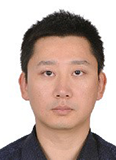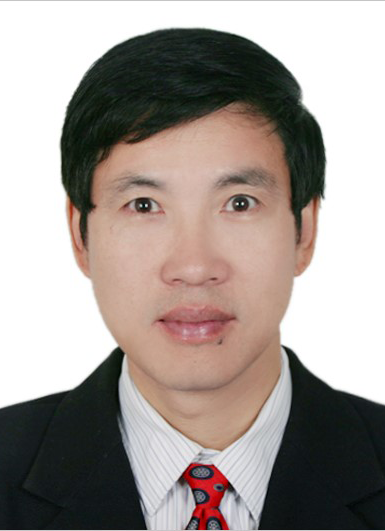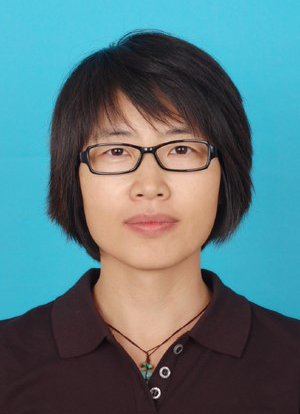

Chief Engineer Yonghua Cao
CCCC Tianjin Port Engineering Research Institute Co., Ltd.
Dr. Yonghua Cao is a senior engineer and certified geotechnical engineer. He serves as a First-Class Professional Chief Engineer at China Communication Construction Company (CCCC) First Harbor Engineering Company Ltd. and Principal Researcher at CCCC Tianjin Port Engineering Research Institute Co., Ltd. Recognized as a Young Scientist and Technological Talent in Transportation, he is also a Tier-One Talent in the Tianjin 131 Innovative Talent Program. Dr. Cao serves as an Enterprise Mentor at Tianjin University, Dalian University of Technology, and other prestigious academic institutions. His research endeavors revolve around the reinforcement techniques and theories of soft soil foundations, limit equilibrium theory, software development, and the formulation of standards and specifications.
Title: Stability Analysis Method of Soil Slope with Reinforcing Action Considered by Distributed Force

Senior Engineer Bin Li
Tianjin Port Engineering Institute Co., Ltd. of CCCC First Harbor Engineering Co., Ltd.
Dr. Bin Li specializes in Geotechnical and Structural Engineering. He currently holds the positions of Manager of the Technical Center at CCCC Tianjin Port Research Institute and Deputy Chief Engineer at Guangxi CCCC Puqing Expressway Co., Ltd. Dr. Li has been honored as a Tier-One Talent in the 2019 Tianjin 131 Innovative Talent Cultivation Program and a Youth Top Talent in the 2021 “10,000-Person Plan for Scientific and Technological Innovation Talents in Engineering Construction” by the China Construction Enterprise Association. He serves as an academic leader at the Key Laboratory of Port Geotechnical Engineering Technology in the Transportation Industry. Over the past five years, as a project leader, he has undertaken 26 research projects, including 2 at the national level and 8 at the provincial and ministerial levels. He has been awarded 10 provincial and ministerial scientific and technological awards, participated in the formulation of 2 industry standards and 3 enterprise standards, and published over 40 high-level academic papers, with 12 indexed by SCI and 27 by EI. Additionally, he holds 8 approved patents and 1 software copyright, and authored 3 books.
Title: Technical Report on Complete Set of Key Technologies and Equipment for Construction of Super-Large Submarine Immersed Tube Tunnel

Prof. Wei Zhang
Henan University of Science and Technology
Zhang Wei, third grade professor, is the deputy dean of the Science and Technology Development Institute of Henan University of Science and Technology, the editorial director of the Journal of Henan University of Science and Technology, the former dean of the School of Civil Engineering of Henan University of Science and Technology, postdoctoral fellow in structural mechanics at Shanghai Jiaotong University and the University of Glasgow in the U.K., the academic and technical leader of the Department of Education of Henan Province, the deputy secretary-general of the Mechanics Association of Henan Province, and a young cadre of teachers in Henan Province, who is mainly engaged in the research on structural strength and the Structural reliability assessment and design research, 1999 Shanghai Jiaotong University postdoctoral station, December 2002 to October 2003 to the University of Glasgow, UK postdoctoral international cooperation research.
In recent years, he has been engaged in and completed more than ten scientific research projects, published more than 60 papers, and more than 20 papers have been retrieved by SCI or EI. 2004, two structural reliability projects (one national and one ministerial) presided over by him passed the ministerial appraisal, and the level has reached the international advanced level. 2005, a project in Henan Province has been appraised at the provincial level, and the level has reached the international advanced level. In 2005, he was awarded the Third Prize of Scientific and Technological Progress by China National Defense Science and Industry Commission. In 2016, he was awarded the excellent teacher of Luoyang city. Civil Engineering Construction Course was recognized as Henan Province Excellence Online Course in 2018. In 2018, “Virtual Simulation Experiment on Proposed Static Force of Semi-Rigid Steel Frame” was recognized as a model virtual simulation experimental teaching project in Henan Province, which was announced by Henan Provincial Department of Education on October 24, 2018.In 2021, “Key Technology and Application of Design and Construction of Urban Underground Space in Complex Environment” was awarded the First Prize of Science and Technology Progress in Henan Province.
Title: Method Research on Direct Integration and Reliability Sensitivity for Structural Reliability Calculation

Prof. Yuefang Rong
Beijing University of Civil Engineering and Architecture, China
Prof. Yuefang Rong graduated from Harbin Institute of Technology in 2007 with a PhD degree in Urban Planning, School of Architecture and Urban Planning. She is currently a professor and head of the Department of Urban and Rural Planning in the School of Architecture and Urban Planning, Beijing University of Civil Engineering and Architecture.
Her main research areas are urban and regional development strategy, small and medium-sized city planning and design, urban and rural planning and design evaluation. She mainly teaches courses including Principles of Urban and Rural Planning, Business Fundamentals for Planners, Urban and Rural Planning and Design (III) (Urban Master Planning and Detailed Control Planning), Graduation Design and other core courses of the planning program. She is the author of monographs “Research on Harbin Winter Olympics Construction Planning Countermeasures Based on Catalyst Theory”, “Research on Local Sustainable Tourism Planning”, “Witness Planning”; and published textbook “Urban Sociology”. She has published more than 30 papers in professional journals, including one in Urban Planning, two in Journal of Urban Planning and two in Planner. She has won more than 15 design awards at the provincial level and above since she started her career, including the Third Prize of Provincial Science and Technology Progress Award in 2006. She has won more than 20 awards in the selection of students' work organized by the Specialized Instruction Committee.
Title: Exploration of the Whole Process of Planning and Control of Construction Waste in the New Stage of High-Quality Development